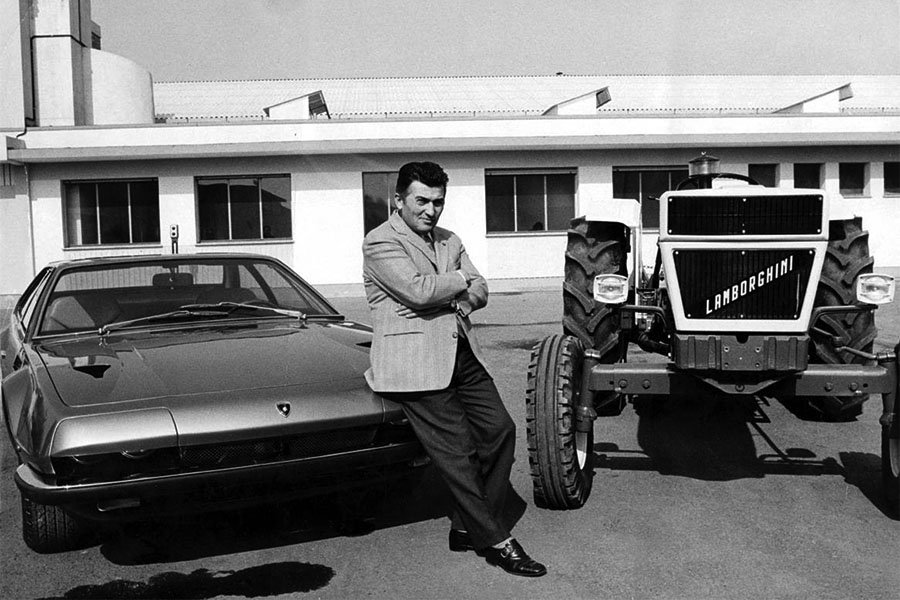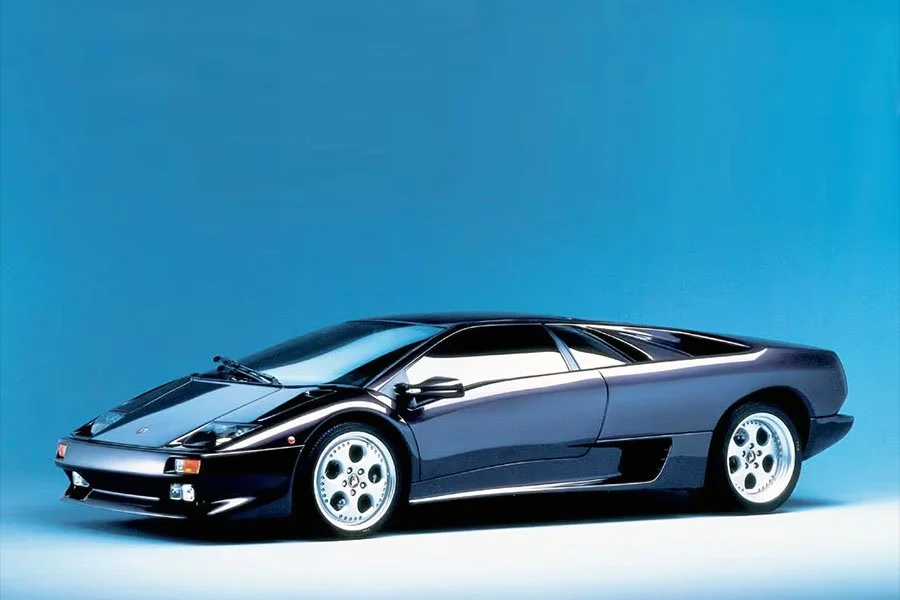Guide: Early 70s Super Coupe - a Historical & Technical Appraisal of the Lamborghini Jarama
/BACKGROUND
By the late 1960s, Automobili Lamboghini had become most famous for its extraordinary looking models like the Miura and Espada. However, these wild Bertone designs were starkly at odds with Ferruccio Lamborghini’s original vision for his car company.
Like many Italian industrialists of the era, Ferruccio Lamborghini favoured conservatively-styled machinery as opposed to rakish attention-grabbing creations.
His preference was perfectly exemplified by Automobili Lamborghini’s original offering: the 350 GT of 1964. The 350 GT subsequently transitioned in to the 400 GT of 1965 and finally the 400 GT 2+2 of 1966.
The 400 GT 2+2 was ultimately replaced by the similarly reserved Islero which debuted at the Geneva Motor Show in March 1968. In contrast to the 350 GT, 400 GT and 400 GT 2+2 (which had all worn coachwork by Carrozzeria Touring of Milan), bodywork for the Islero was designed and manufactured by Carrozzeria Marazzi.
Like Touring, the Marazzi works was based in Milan. The company had emerged from the ashes of Touring (which had been declared bankrupt in 1967) and was staffed by many of the old firm’s personnel.
Between 1968 and 1970, Lamborghini and Marazzi went on to produce 225 Isleros. This figure comprised 125 examples of the original version and another 100 of the improved Islero S that had been introduced in 1969.
However, because the Marazzi-styled Islero’s appearance had not met with universal approval, for its successor, Ferruccio Lamborghini turned to Bertone. Perhaps through loyalty, Marazzi were still given the contract to manufacture bodies for the new model.
In typical Lamborghini tradition, this latest machine, dubbed Jarama, had a bull fighting connection to its name; Jarama was considered the most important bull fighting region of Spain. Ferruccio Lamborghini was an avid fan of the discipline as borne out by the company’s logo and the names he chose for the Espada, Miura and Islero.
The Jarama was effectively a short wheelbase re-bodied version of the recently introduced Series 2 Espada. It made its debut at the Geneva Motor Show in March 1970 and joined a model line up that comprised the aforementioned Espada and Miura S. In the background, Automobili Lamborghini were also investing heavily to bring a new junior model to market: the highly anticipated mid V8-engined Urraco.
CHASSIS
The Jarama was based around a pressed steel monocoque bodyshell. Its floorpan was a shortened version of the Espada unit with the wheelbase cut from 2650mm to 2380mm (a 270mm reduction). To improve weight distribution, the battery was located in the trunk.
As per the Espada, the Jarama’s suspension layout comprised double wishbones with coil springs and telescopic Koni dampers all round. An anti-roll bar was installed at either end. Spring rates were adjusted to reflect the 95kg difference between the two cars.
For the Series 2 Espada, Lamborghini had introduced Girling four-wheel ventilated disc brakes, an arrangement carried over to this latest model. The twin circuit and servo-assisted set up comprised discs with a 300mm diameter up front and 280mm diameter at the back. The brake servo itself was the latest Girling MkIIb unit.
Handsome centre-lock 7 x 15-inch Campagnolo magnesium alloy wheels once again came shod with Pirelli Cinturato tyres.
A custom 100-litre fuel tank was installed underneath the trunk floor.
ENGINE / TRANSMISSION
In the engine bay was Lamborghini’s Giotto Bizzarrini-designed 60° V12 - arguably the best high performance road car engine of its time.
The Bizzarrini V12 was an all-alloy power unit with dual overhead camshafts and wet-sump lubrication. Having initially been offered in 3.5-litre trim (for the 350 GT), it had been enlarged to a four-litre displacement in 1965 with the advent of the 400 GT.
The engine used by the Jarama and Espada was broadly similar to the one found in the Miura S. However, to facilitate the lowest possible hood profile, six Weber 40 DCOE sidedraught carburettors were fitted instead of the Miura’s downdraught assemblies.
Compression was an unchanged 10.7:1 and ignition was via a single spark plug per cylinder, a single distributor and two Magnetti Marelli coils.
All told, peak output was 350bhp at 7500rpm and 290lb-ft at 5500rpm.
Power was delivered through Lamborghini’s own five-speed gearbox (mounted in unit with the engine), a Borg & Beck single dry-plate clutch and in-house-manufactured differential.
BODYWORK
Bertone handed the task of styling the Jarama to its head designer, Marcello Gandini, who had previously penned both the Miura and Espada for Lamborghini.
Unlike, those models, the Jarama remit called for something a little more restrained.
Arguably the Jarama’s most distinctive feature was its front end styling; the two light units per side were partially obscured by an eyelash that rotated downwards when activated. Gandini used a broadly similar treatment for the Alfa Romeo Montreal that was also unveiled in production-ready trim at Geneva in 1970.
Between and underneath the headlights was a large intake aperture. Underneath this was a slim secondary intake with discrete lip spoiler.
The expansive hood was given a discrete power bulge to clear the engine and a pair of satin black NACA ducts on either side.
An angular five window fastback cockpit had slim A and B pillars that gave excellent visibility. C pillars were vented so stale air could escape from the cabin.
The side profile revealed a roofline with a discrete lip spoiler at its trailing edge.
Down each flank, flared wheelarches lent the Jarama a macho appearance.
The simple Kamm tail was home to single piece tail lights (later used by the Silhouette) and a wraparound bumper. A similar single piece bumper (with matching rubbing strip) was also used at the front of the car.
Body panels were fashioned exclusively from steel.
INTERIOR
The Jarama’s interior featured a striking new dash that spanned the entire with of the car. An oversize upward curving knee roll was unlike anything else used at the time. It protruded well beyond what was necessary and unusually housed the majority of the rocker-type switchgear on a horizontal platform ahead of a recessed instrument fascia. The top of the dash was completely flat.
A full complement of gauges included large read outs for road and engine speed with smaller read outs for oil pressure, water temperature, battery charge and fuel level. The white prototype (depicted here with its unique tail lights) also came with an oil temperature gauge, but this was dropped for production.
The instrumentation was housed on a wooden fascia to match the glovebox lid, steering wheel rim and gear knob.
Aside from the carpeted floors and sidewalls, the rest of the cockpit was upholstered in leather.
Other standard equipment included tinted glass and electric windows.
Well-padded seats were fitted front and rear. Unfortunately, space in the back was extremely limited owing to the Jarama’s very short wheelbase.
OPTIONS
Optional extras were limited to air-conditioning, fog lights, a passenger-side exterior mirror, fabric upholstery inserts, a backwards-facing transmission tunnel-mounted audio system with electric antenna and an unusual side-by-side twin panel sunroof.
WEIGHT / PERFORMANCE
The Jarama weighed in at 1540kg.
It had a top speed of 152mph and 0-62mph time of 6.6 seconds.
PRODUCTION CHANGES
Lamborghini made a number of minor changes during production.
The front indicators (initially located underneath the bumper) were soon incorporated to the rubbing strip to give a neater appearance.
The last few dozen cars to leave the factory came with vented front fenders and brake cooling intakes carved out from the corners of the front apron (features also adopted on the subsequent Jarama S).
END OF PRODUCTION
Production was discontinued in early 1972 to make way for the much-improved Jarama S.
In total, 176 cars were built of which just six are understood to have been right-hand drive.
Text copyright: Supercar Nostalgia
Photo copyright: Lamborghini - https://www.lamborghini.com



































